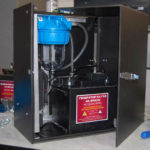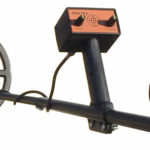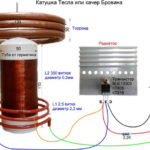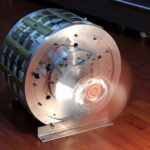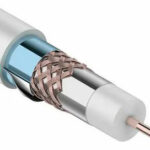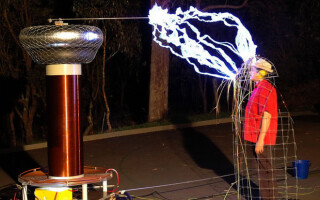Genius scientist and inventor of the 19th century Michael Faraday is known for his active work with electricity, the electromagnetic field and related physical phenomena. One of his significant discoveries was a protective structure called the Faraday cage. Below, let's examine what it is and what practical value the invention represents.
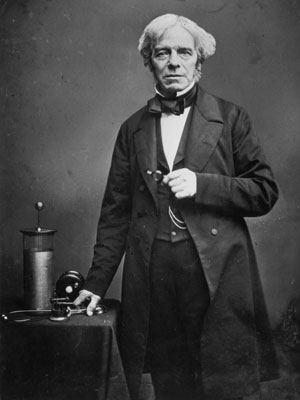
Contents
What is a Faraday cage
A Faraday cage is a box with walls of well-conductive metal. The design does not require an external power connection, but is usually grounded. The physical effect of the cage is manifested when it is exposed to an external factor, which is electromagnetic radiation.
The first constructions to demonstrate the shielding effect had the appearance of an ordinary cage, which gave the phenomenon its name. In fact, wire or perforated walls of the "box" are convenient for visual control of objects or devices inside an enclosed space, but they can be easily replaced with solid ones. The main thing is that the material should be conductive.
The principle of action
The action of the Faraday cage is based on the fact that the charge when it enters the conductor is distributed on its surface, while the inside remains neutral. In fact, the whole cell, consisting of a conductive material is a single conductor, the "ends" of which acquire the opposite charge. The electric current arising in this case creates a field, which compensates the external impact. The electric field strength in the internal part of such a structure is zero.
Interestingly, if the field is generated inside the cell, the effect also works. However, in this case, the charge is distributed on the inner surface of the mesh or other conductive plane and cannot penetrate outside.
In English-speaking terminology, a QF sounds like a "Faraday shield," that is, a "Faraday shield/screen. This concept captures well the essence of the device, which, like a shield or protective screen, reflects the rays affecting its contents.
Keep in mind that the shielding effect only works on an alternating magnetic field. It does not interfere with permanent or weakly alternating magnetic influences, such as the natural magnetic potential of the Earth.
To determine whether the Faraday chamber will reflect high-frequency radiation, it is sufficient to know the size of the grid cells (if the conducting part is made in the form of a cell) and the length of the influencing wavelength. The design is effective if the second value is greater than the first.
Spheres of application of the QF effect
The effect discovered by Faraday has not only scientific meaning, but also a fairly wide practical application. The simplest example of a Faraday cage can be found in everyday life, it is present in almost every kitchen - it is a microwave oven. Its five body walls are made of sufficiently thick steel plates, and between the two layers of glass of the door there is a metal layer with perforation holes for better visibility.
The RF booth
Radiofrequency cabin is a room isolated from the effects of electrical, magnetic and radio radiation, usually a small area. Its walls, floor and ceiling are embedded with high conductivity grids that form an enclosed but externally invisible cage.
MRI rooms
Such high-precision equipment as a medical MRI scanner requires careful protection from external electromagnetic waves. The slightest outside influence can affect the results of the study, so the room in which the MRI unit is located is completely shielded.
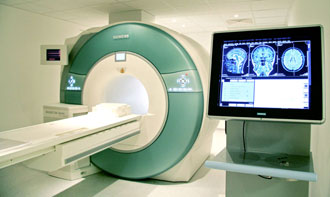
Laboratories
In laboratory research, in order to obtain accurate results, it is important not only to use advanced equipment, but also to reliably shield it from external factors, such as magnetic and electric fields.
It should be understood that not only directional radiation from specific sources is meant, but also electromagnetic noises that are constantly present in the atmosphere, especially in and near populated areas.
Qualitative shielding of equipment with a CF effect requires specialized design calculations and professional installation.
Protective suits
Special suits have been developed for people working in areas with a high probability of electrocution. Their upper layer is made of metal-containing fabric and separated from the body by insulating material. In the event of exposure to residual static or electric current, the charge flows down the outer jacket of the kit.
Protective clothing is indispensable when working on high-voltage lines. Even when de-energized, they retain dangerous levels of static charge due to the many kilometers of electrical wires.
In a world of fun
The KF effect, colorfully designed on stage, is very spectacular. In this case, often not a simple cage is used, but a seemingly weightless shell of large-mesh mesh or even a specially designed suit resembling conventional clothing. In this case the current is supplied as effectively as possible, for example by means of Tesla coils or similar devices, which create a charge from an electrostatic generator.
Making a Faraday cage with your own hands
In everyday life, making a homemade cage may be necessary to "hide" gadgets from the action of various waves that can cause disturbances in the sensitive electronic "stuffing".
An example of such a construction is a plywood box that has been finished in a certain way. As the plywood acts as an insulating layer, it must be perfectly clean and dry. You can assemble a box with your own hands or take a ready-made - the main thing that it was assembled without the use of nails or other metal fasteners. Assembly is carried out in several stages:
- Food foil is divided into sections, according to the size of the plywood walls or their blanks.
- The surfaces of the future box are trimmed with foil from the outside. At the same time its shiny side should be turned outward.
- The walls are fastened inside with scotch tape, and a couple of mats for the computer mouse are put on the bottom of the box.
- Carefully check that in the closed position of the lid, the foil layer forms a continuous shell, without the slightest gaps and tears.
The second variant assumes that the basis of the Faraday cage with your own hands is a metal tank (pot, box, box, etc.), inside of which the insulation of cardboard, the same plywood or other material is arranged. The condition of a tight fit of the lid for this structure is no less important than for the above described.
Is it necessary to do grounding
There is no consensus on the need to ground the CF. Large structures and those that can be affected by a particularly powerful electric discharge must be earthed.
Grounding definitely protects against abnormal situations where an accumulated strong charge can "puncture" the air environment and strike a nearby object or person.
Testing a homemade Faraday cage
To test the principle of the Faraday cage in practice, it is most convenient to use a compact battery-operated radio receiver. It should be turned up to maximum volume and tuned to the most powerful FM channel available. If the cell works, the radio in it will go silent.
If you can hear the receiver even a little, it means that one hundred percent shielding is not achieved, and you should look for gaps in the conductive layer.
A cell phone is also suitable for testing a self-assembled camera. Once inside, it will stop receiving base station signals, that is, when you call on it you will hear the corresponding message of the cellular operator's automatic informer.
Related articles:
